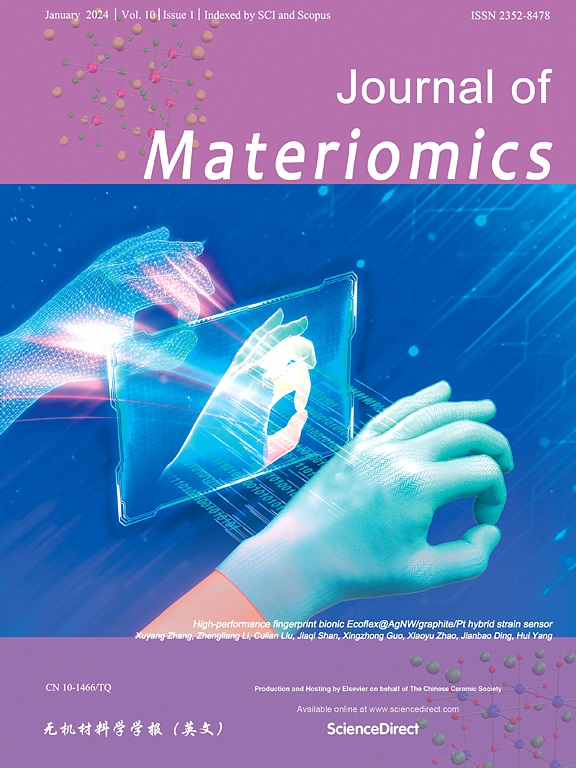揭示无碱铝硅酸盐玻璃多层网状结构与力学性能的关系
IF 9.6
1区 材料科学
Q1 CHEMISTRY, PHYSICAL
引用次数: 0
摘要
无碱铝硅酸盐玻璃具有几个优点,包括低热膨胀系数和密度,高弹性模量,以及优异的化学和热稳定性,使其成为TFT-LCD和OLED应用的理想基板材料。了解这种玻璃的成分-微观结构-性能之间的关系对于设计具有最佳性能和合适工艺参数的材料至关重要。在本工作中,我们研究了成分如何影响无碱铝硅酸盐基板玻璃的微观结构和性能。我们通过实验和分子动力学模拟阐明了成分-微观结构-性能之间的关系。随着B2O3在玻璃中取代Al2O3,网络结构中[AlO4]的含量降低,[BO3]和[BO4]的含量增加。[BO3]的三角形结构扩大了网络,降低了网络的连通性,使整体结构松散。因此,玻璃熔体的粘度、粘滞活化能和熔融温度都降低了。该研究为基于成分-显微组织-性能关系的工业生产提供了必要的数据和理论基础。本文章由计算机程序翻译,如有差异,请以英文原文为准。

Unraveling the relationship between the multilayer network structure and mechanical properties of alkali-free aluminosilicate glass
Alkali-free aluminosilicate glass has several advantages, including a low thermal expansion coefficient and density, high elastic modulus, and excellent chemical and thermal stability, making it an ideal substrate material for TFT-LCD and OLED applications. Understanding the relationship between the composition-microstructure-properties of this glass is crucial for designing materials with optimal properties and suitable process parameters. In this work, we investigated how the composition affects the microstructure and properties of alkali-free aluminosilicate substrate glass. We elucidated the relationship between composition-microstructure-properties through experiments and molecular dynamics simulations. As B2O3 replaced Al2O3 in the glass, the content of [AlO4] in the network structure decreased, while the amounts of [BO3] and [BO4] increased. The triangular structure of [BO3] expanded the network, reduced its connectivity, and loosened the overall structure. Consequently, the glass melt's viscosity, viscous activation energy, and melting temperature decreased. This study provided essential data and a theoretical foundation for industrial production based on the composition-microstructure-properties relationship.
求助全文
通过发布文献求助,成功后即可免费获取论文全文。
去求助
来源期刊

Journal of Materiomics
Materials Science-Metals and Alloys
CiteScore
14.30
自引率
6.40%
发文量
331
审稿时长
37 days
期刊介绍:
The Journal of Materiomics is a peer-reviewed open-access journal that aims to serve as a forum for the continuous dissemination of research within the field of materials science. It particularly emphasizes systematic studies on the relationships between composition, processing, structure, property, and performance of advanced materials. The journal is supported by the Chinese Ceramic Society and is indexed in SCIE and Scopus. It is commonly referred to as J Materiomics.
 求助内容:
求助内容: 应助结果提醒方式:
应助结果提醒方式:


